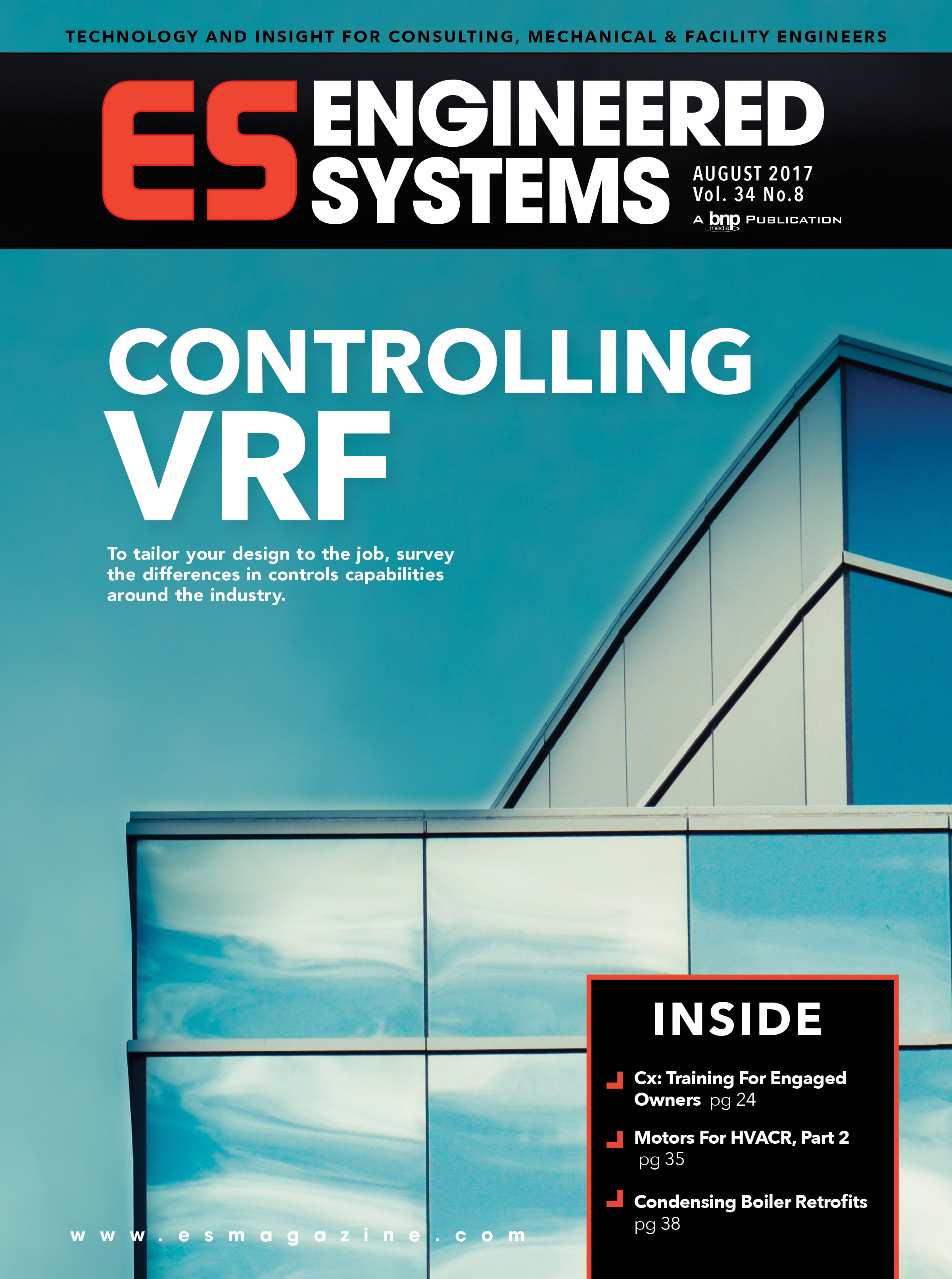Talking The Talk
In "selling" commissioning (Cx), we find that the decisionmakers are asking for hard and fast proof that Cx is beneficial.Although all practitioners know that there isn't a single project out there that didn't benefit from commissioning, it is a tricky proposition to try to predict the benefits of commissioning a particular project. It is simply speculation that deficiencies will be found and that those deficiencies, if left unidentified (i.e., without the Cx design review and testing processes), would result in problems for the building owner. To make such a prediction prior to the start of a design-construction project can be considered defamatory to the project team (project managers, designers, contractors, et al.).
After deficiencies have been identified (both during design review and end-of-construction verification testing), it is often possible to predict what the financial impact of that deficiency going undiscovered would have been for the owner. After construction, the owner may continue to "pay" for increased energy consumption and increased O&M staff time required to find, identify, understand, and troubleshoot the problems, usually with little or no design intent or as-built documentation.
The challenge faced by the Cx community as a whole is to start documenting a "track record" of commissioning. By collecting, measuring, and organizing various "parameters," we can develop a database of historical quantitative benefits of commissioning. This will go a long way towards justifying any perceived increases in initial project costs due to Cx, helping position you to implement commissioning on more and more future projects.
Walking The Walk
- Record the number of "critical" system performance and maintainability design flaws discovered by the Cx consultant during the design phase of a project.
- Estimate the cost impact due to change-orders during construction or, even worse, having to troubleshoot, redesign, and modify the "new" system after construction. In the absence of resources to redo a faulty system after construction is complete, other consequences of a design problem could be the impact of not achieving the initial design intent on the building function and occupants (e.g., life safety implications, environmental control sacrifices, inability to support particular processes within the new building).
- Record the number of changeorders executed during the construction phase, and compare it with non-commissioned projects and/or industry benchmarks.
- Record the number of deficiencies discovered during the verification testing process at the end of construction. Estimate the cost impact on building operations (e.g., energy, O&M staff time, IAQ complaints/tenant productivity). Clearly, it is nearly impossible to quantify possible indoor air quality cost implications, but any deficiency in IAQ systems raises a flag for potential costly litigation in the future.
- Record the number of warranty period callbacks to contractors and designers and compare with non-commissioned projects and/or industry benchmarks.
- Measure actual energy consumption (steam, chilled water, electricity, gas, oil, etc.) for commissioned buildings and compare to similar non-commissioned buildings and/or industry benchmarks.
It's always a challenge to make the time to stop and evaluate the results of one's good work, especially when all of us have more "productive" work to accomplish than ever before. However, if commissioning is going to continue to grow as "business as usual" for building owners and operators, there will come a day of reckoning. When push comes to shove, the issues raised will include: "Why are we putting so much money and effort into commissioning?"
"Aren't we already paying for that?"
"We're over budget on this project; let's take out commissioning."
Better Late Than Never
It may not be too late to go back and look at commissioned projects which are already complete and collect some pertinent data. Final Cx reports should be an excellent source of the "raw data" needed to start quantifying the benefits of the Cx process.So, be proactive, toot your own horn, and show what a difference commissioning can make on real projects, for real people, and with real money.


